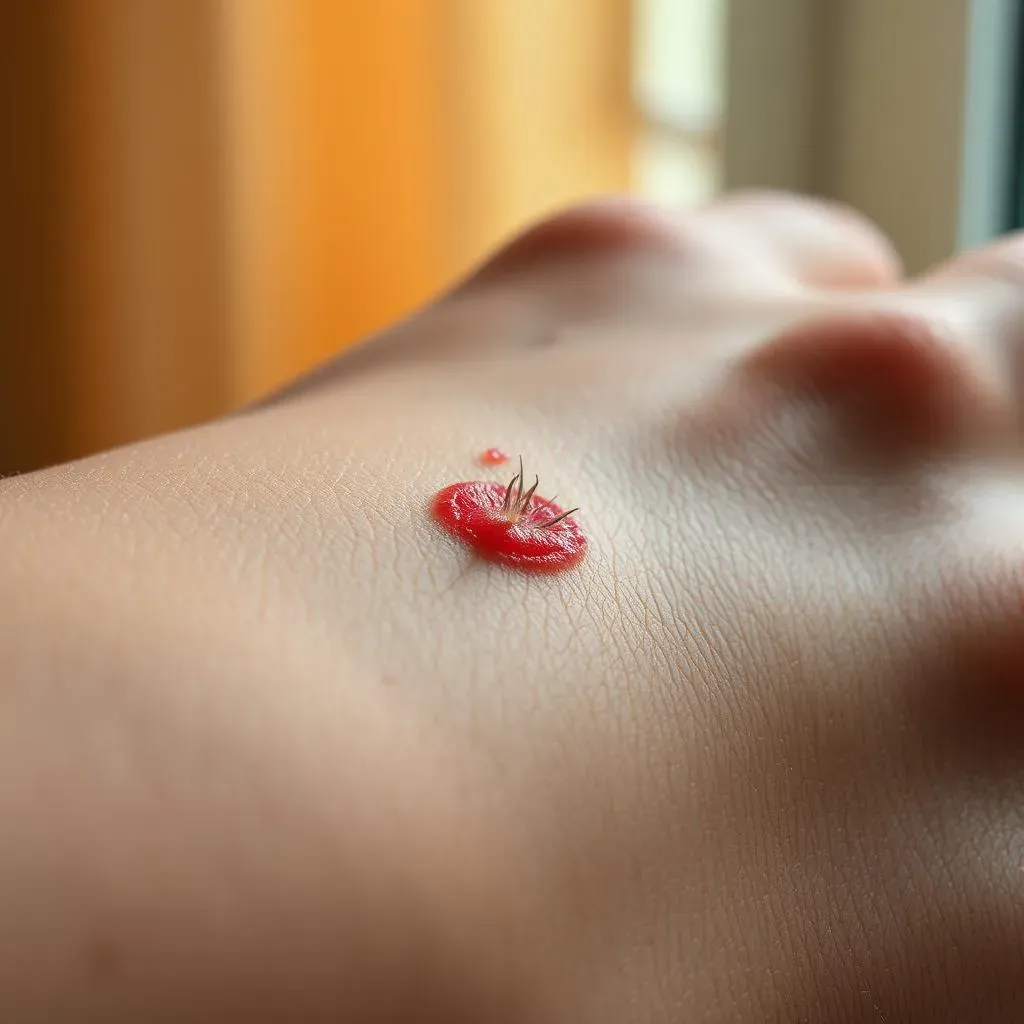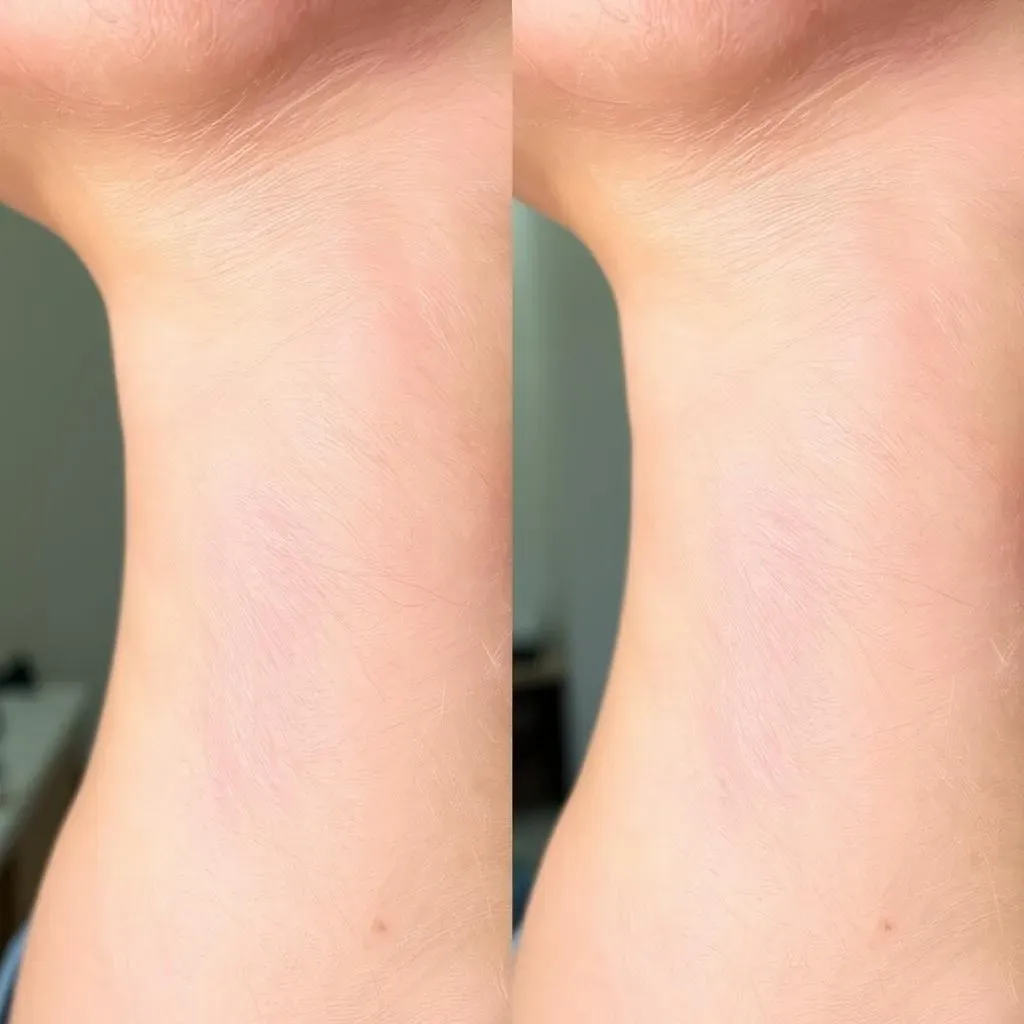Table of Contents
Ingrown hairs can be a frustrating and painful problem for many individuals, causing inflammation, infection, and scarring. For those who suffer from frequent ingrown hairs, traditional hair removal methods like shaving, waxing, and tweezing can exacerbate the issue. However, there is a highly effective solution that has gained popularity in recent years: laser hair removal. By targeting the root of the problem - the hair follicle - laser hair removal provides a long-term solution to preventing ingrown hairs. In this article, we will delve into the world of laser hair removal ingrown hairs, exploring the causes of ingrown hairs, the science behind how laser hair removal treats them, and the numerous benefits of this treatment. We will also discuss how to prevent ingrown hairs after laser hair removal and address frequently asked questions about the process. Whether you're considering laser hair removal for ingrown hairs or simply looking for a more effective way to manage unwanted hair, this comprehensive guide will provide you with the knowledge you need to make an informed decision.
Understanding Ingrown Hairs and Their Causes

Understanding Ingrown Hairs and Their Causes
What are Ingrown Hairs?
Ingrown hairs occur when hair grows back into the skin, causing inflammation, redness, and potentially leading to infection. This happens when the hair follicle becomes curved or the hair is cut too closely to the skin, allowing the sharp edge to grow back into the skin. Ingrown hairs can appear anywhere on the body where hair is present, but they are most common in areas where the skin is thicker, such as the bikini line, underarms, and beard area.
According to dermatologists, ingrown hairs are more common in individuals with curly or coarse hair, as these hair types are more prone to curling back into the skin. Furthermore, poor shaving techniques, tight clothing, and excessive sweating can all contribute to the development of ingrown hairs.
Causes of Ingrown Hairs
Cause | Description | Prevention |
|---|---|---|
Improper Shaving Techniques | Shaving too closely, using a dull razor, or shaving in the wrong direction can cause hair to become trapped in the skin. | Exfoliate before shaving, use a sharp razor, and shave in the direction of hair growth. |
Tight Clothing | Clothing that is too tight can cause friction, leading to irritation and ingrown hairs. | Wear loose, breathable clothing to reduce friction. |
Excessive Sweating | Excessive sweating can lead to clogged pores and increase the risk of ingrown hairs. | Use antiperspirant, wear loose clothing, and practice good hygiene. |
- Avoid shaving over the same spot multiple times.
- Exfoliate regularly to remove dead skin cells.
- Use a moisturizer to keep the skin hydrated and reduce irritation.
Risk Factors and Prevention
While ingrown hairs can affect anyone, certain individuals are more prone to them. Those with curly or coarse hair, as well as people with darker skin tones, are more likely to experience ingrown hairs. Additionally, individuals who shave, wax, or use other hair removal methods are at a higher risk.
To prevent ingrown hairs, it's essential to maintain good hygiene, avoid tight clothing, and use proper shaving techniques. Regular exfoliation and moisturizing can also help reduce the risk of ingrown hairs. However, for those who experience frequent or severe ingrown hairs, laser hair removal may be a more effective solution.
How Laser Hair Removal Treats Ingrown Hairs

How Laser Hair Removal Treats Ingrown Hairs
Laser hair removal is a highly effective treatment for ingrown hairs, as it targets the root cause of the problem: the hair follicle. By using a laser to heat and destroy the follicle, laser hair removal prevents the hair from growing back, thereby reducing the risk of ingrown hairs. This method is particularly useful for individuals who experience frequent ingrown hairs, as it provides a long-term solution.
The process works by emitting a beam of light that is absorbed by the pigment in the hair follicle. This absorption causes the follicle to heat up, damaging it and preventing future hair growth. Laser hair removal can be used on most areas of the body, including the bikini line, underarms, and face. It's essential to note that multiple sessions are often required to achieve optimal results, as laser hair removal is most effective on hair that is in the active growth phase.
Benefits of Laser Hair Removal for Ingrown Hairs | Description | Advantages |
|---|---|---|
Permanent Hair Reduction | Laser hair removal destroys the hair follicle, preventing regrowth. | Reduces the risk of ingrown hairs by minimizing hair regrowth. |
Reduced Irritation | Laser hair removal eliminates the need for shaving, waxing, and tweezing. | Decreases skin irritation and inflammation associated with ingrown hairs. |
Long-Term Solution | Multiple sessions provide a permanent reduction in hair growth. | Saves time and money in the long run by reducing the need for frequent hair removal. |
While laser hair removal is an effective solution for ingrown hairs, it's crucial to follow proper aftercare to minimize the risk of complications. This includes avoiding direct sun exposure, using gentle skincare products, and refraining from strenuous activities for a short period after treatment.
- Avoid shaving or waxing the treated area for at least two weeks after treatment.
- Exfoliate the skin gently to remove dead skin cells and promote healing.
- Apply topical creams or gels as recommended by your practitioner to soothe the skin.
Laser Hair Removal Ingrown Hairs: Benefits and Advantages

Laser Hair Removal Ingrown Hairs: Benefits and Advantages
Benefits of Laser Hair Removal for Ingrown Hairs
Laser hair removal offers numerous benefits for individuals suffering from ingrown hairs. One of the primary advantages is the permanent reduction of hair growth, which significantly decreases the risk of ingrown hairs. By destroying the hair follicle, laser hair removal ensures that the hair does not grow back, thereby eliminating the cause of ingrown hairs. This treatment is especially beneficial for individuals who experience frequent ingrown hairs, as it provides a long-term solution that saves time and reduces the need for frequent hair removal methods.
Another significant benefit of laser hair removal is the reduction of skin irritation associated with ingrown hairs. Traditional hair removal methods like shaving, waxing, and tweezing can cause micro-cuts, ingrown hairs, and razor burn, leading to inflammation and discomfort. Laser hair removal eliminates the need for these methods, resulting in smoother skin and reduced irritation. Furthermore, laser hair removal can be used on most skin types, including sensitive skin, making it a versatile solution for individuals with various skin concerns.
Benefits | Description | Advantages |
|---|---|---|
Permanent Hair Reduction | Laser hair removal destroys the hair follicle, preventing regrowth. | Reduces ingrown hairs and saves time. |
Reduced Irritation | Eliminates need for shaving, waxing, and tweezing. | Decreases skin irritation and inflammation. |
Long-Term Solution | Provides permanent reduction in hair growth. | Saves money and time in the long run. |
- Reduced risk of ingrown hairs
- Permanent solution
- Minimizes skin irritation
Advantages of Laser Hair Removal Over Other Methods
Laser hair removal has several advantages over other hair removal methods, particularly when it comes to treating ingrown hairs. Unlike waxing and tweezing, which can cause hair to break off below the skin's surface, leading to ingrown hairs, laser hair removal destroys the hair follicle, preventing regrowth. Shaving, on the other hand, can cause micro-cuts and razor burn, which can increase the risk of ingrown hairs. Laser hair removal is a more precise and long-lasting solution, making it a preferred choice for those looking to eliminate ingrown hairs.
In addition to its effectiveness, laser hair removal is also a relatively painless treatment, especially when compared to waxing and tweezing. The treatment is also relatively quick, with most sessions lasting between 15 to 60 minutes, depending on the area being treated. With the advancement of technology, laser hair removal has become more affordable and accessible, making it a viable option for individuals seeking a permanent solution to ingrown hairs.
Method | Effectiveness for Ingrown Hairs | Pain Level |
|---|---|---|
Shaving | Low | Low-Moderate |
Waxing | Low-Moderate | High |
Tweezing | Low | High |
Laser Hair Removal | High | Low-Moderate |
- Permanent hair reduction
- Reduced irritation
- Long-term solution
Preventing Ingrown Hairs After Laser Hair Removal

Preventing Ingrown Hairs After Laser Hair Removal
Understanding the Importance of Aftercare
Laser hair removal is a highly effective treatment for ingrown hairs, but it's essential to follow proper aftercare to minimize the risk of complications. Aftercare plays a crucial role in preventing ingrown hairs after laser hair removal. By following a few simple steps, individuals can ensure a smooth recovery and reduce the likelihood of ingrown hairs.
Proper aftercare begins immediately after the treatment. It's essential to avoid direct sun exposure, as this can cause irritation and increase the risk of complications. Using gentle skincare products and avoiding strenuous activities for a short period after treatment can also help promote healing. Additionally, exfoliating the skin gently can remove dead skin cells and help prevent ingrown hairs.
Aftercare Tips | Description | Benefits |
|---|---|---|
Avoid Direct Sun Exposure | Prevents irritation and promotes healing | Reduces risk of complications |
Use Gentle Skincare Products | Soothes the skin and promotes healing | Minimizes irritation and inflammation |
Avoid Strenuous Activities | Allows the skin to heal | Reduces risk of complications |
- Exfoliate gently to remove dead skin cells
- Moisturize to keep the skin hydrated
- Avoid shaving or waxing the treated area for at least two weeks
Exfoliation and Skincare Routine
Exfoliation is a critical step in preventing ingrown hairs after laser hair removal. By removing dead skin cells, exfoliation helps to prevent the hair from growing back into the skin. It's essential to exfoliate gently, as harsh exfoliation can cause irritation and increase the risk of ingrown hairs. A skincare routine that includes moisturizing can also help keep the skin hydrated, reducing the risk of irritation and inflammation.
Individuals should start exfoliating 2-3 days after laser hair removal, using a gentle exfoliant containing alpha-hydroxy acids (AHAs) or beta-hydroxy acids (BHAs). Exfoliating 1-2 times a week can help maintain healthy skin and prevent ingrown hairs. Additionally, using a moisturizer that is rich in emollients and hydrating ingredients can help soothe and calm the skin.
Exfoliation Methods | Description | Benefits |
|---|---|---|
Chemical Exfoliants | Contain AHAs or BHAs to gently remove dead skin cells | Promotes cell turnover and prevents ingrown hairs |
Physical Exfoliants | Use gentle scrubs or brushes to remove dead skin cells | Improves skin texture and reduces ingrown hairs |
- Exfoliate 1-2 times a week
- Use gentle exfoliants containing AHAs or BHAs
- Moisturize regularly to keep the skin hydrated
Maintenance and Follow-Up Treatments
While laser hair removal provides a long-term solution for ingrown hairs, it's essential to maintain the treatment area to prevent regrowth. Follow-up treatments may be necessary to achieve optimal results, as laser hair removal is most effective on hair that is in the active growth phase. Additionally, maintaining a consistent skincare routine and avoiding practices that can cause ingrown hairs, such as tight clothing and improper shaving techniques, can help prevent ingrown hairs from returning.
Individuals should schedule follow-up treatments as recommended by their practitioner, typically every 4-6 weeks. Between treatments, it's essential to avoid shaving or waxing the treated area, as this can cause irritation and increase the risk of ingrown hairs. By following these aftercare tips and maintaining a healthy skincare routine, individuals can enjoy smoother, ingrown-hair-free skin for years to come.
Follow-Up Treatments | Description | Benefits |
|---|---|---|
Scheduled Treatments | Maintains optimal results and prevents regrowth | Ensures long-term solution for ingrown hairs |
Skincare Routine | Helps maintain healthy skin and prevents ingrown hairs | Promotes smooth, hydrated skin |
- Schedule follow-up treatments every 4-6 weeks
- Avoid shaving or waxing the treated area
- Maintain a consistent skincare routine
Laser Hair Removal Ingrown Hairs: Frequently Asked Questions

Laser Hair Removal Ingrown Hairs: Frequently Asked Questions
Q: What is laser hair removal and how does it work?
Laser hair removal is a medical procedure that uses a laser to heat and destroy hair follicles, preventing hair growth. The laser emits a beam of light that is absorbed by the pigment in the hair follicle, causing it to heat up and become damaged. This damage prevents the hair from growing back, providing a long-term solution for ingrown hairs.
The process is relatively painless and can be used on most areas of the body. Multiple sessions are often required to achieve optimal results, as laser hair removal is most effective on hair that is in the active growth phase.
Benefits of Laser Hair Removal | Description | Advantages |
|---|---|---|
Permanent Hair Reduction | Laser hair removal destroys the hair follicle, preventing regrowth. | Reduces ingrown hairs and saves time. |
Reduced Irritation | Eliminates need for shaving, waxing, and tweezing. | Decreases skin irritation and inflammation. |
Long-Term Solution | Provides permanent reduction in hair growth. | Saves money and time in the long run. |
Q: Is laser hair removal suitable for all skin types?
Laser hair removal is suitable for most skin types, including sensitive skin. However, it's essential to consult a specialist to determine the suitability of laser hair removal for individual skin types and hair colors. Certain skin conditions, such as tattoos or dark skin, may require special consideration.
- Fair skin with light hair: Most responsive to laser hair removal.
- Darker skin: Requires specialized lasers, such as Nd: YAG lasers.
- Sensitive skin: May require adjustments to laser settings.
Q: How many sessions are required for laser hair removal?
The number of sessions required for laser hair removal varies depending on the individual and the area being treated. On average, 3-6 sessions are needed, spaced 4-6 weeks apart. This allows for the treatment of all hair follicles in different growth phases.
It's essential to complete the recommended number of sessions to achieve optimal results. Maintenance treatments may also be necessary to maintain the desired level of hair reduction.
Conclusion: Embracing the Power of Laser Hair Removal for Ingrown Hairs
Laser hair removal has revolutionized the way we approach ingrown hairs, offering a permanent and relatively painless solution to this common problem. By understanding the causes of ingrown hairs and the science behind laser hair removal, individuals can make informed decisions about their treatment options. With its numerous benefits, including reduced risk of ingrown hairs, smoother skin, and increased confidence, laser hair removal is an attractive choice for those seeking a long-term solution. While it's essential to follow proper aftercare and maintenance to minimize the risk of ingrown hairs after treatment, the results are well worth the investment. If you're tired of dealing with ingrown hairs and are looking for a reliable and efficient solution, consider laser hair removal. Consult with a specialist today to determine if this treatment is right for you, and discover the freedom and confidence that comes with silky, ingrown-hair-free skin.
